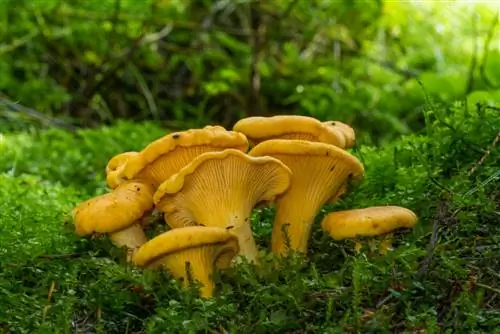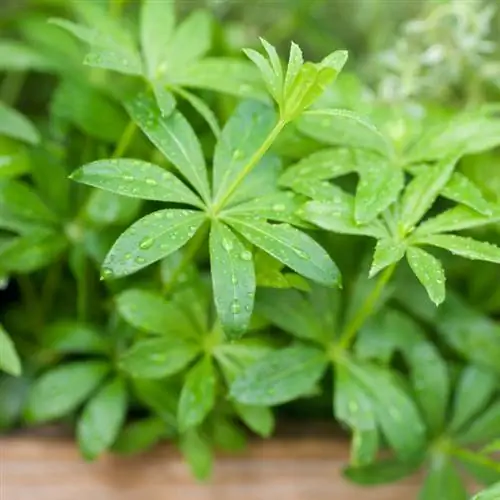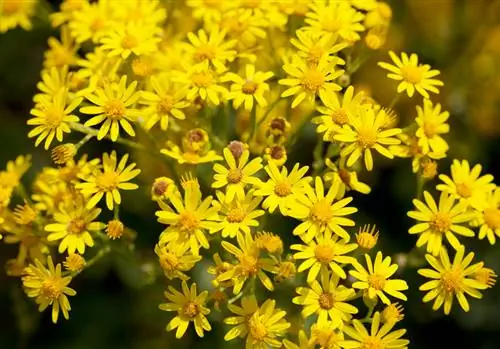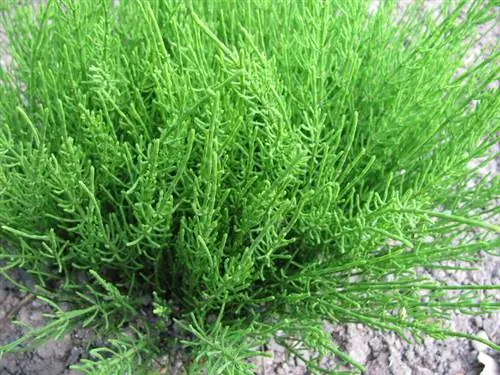- Author admin [email protected].
- Public 2023-12-16 16:46.
- Last modified 2025-06-01 06:02.
If you find the chanterelle, it will literally shine at you. It is one of the most popular and tasty edible mushrooms, but can quickly be confused with the false chanterelle. However, you can distinguish between the two species based on these characteristics.

How do I recognize real chanterelles and how do I distinguish them from false chanterelles?
Real chanterelles (Cantharellus cibarius) have a yellow cap, no hollow stem, strips instead of lamellae and firm flesh. False chanterelles (Hygrophoropsis aurantiaca) often have orange caps, lamellae, flexible flesh and no distinctive smell.
True chanterelle (Cantharellus cibarius) - How to recognize it
The chanterelle occurs in both coniferous and deciduous forests. However, it grows particularly often in sparse forests with old trees and a lot of dead wood. As a rule, you can find it in the mossy underground in warm places, although this fungus also loves moisture. That's why it is primarily found in regions that naturally receive a lot of rain. Conveniently, chanterelles often grow in groups.
Hat
The caps of young chanterelles are typically rolled downwards, while those of older ones are wavy and funnel-shaped. Real chanterelles are pale to rich egg-yolk colored (which is why they are also popularly known as “egg sponge”), but never orange!
Strips and stem
The chanterelle does not have lamellae, but strips. These run down the stem and are often connected like a net. The strips and stem are the same color as the hat. This is short and often curved. The stem is not hollow inside.
Meat
The white to pale yellow flesh is firm but quite brittle and can be fibrous to tough in the stem.
Occurrences
The chanterelle grows between June and November in mossy deciduous and coniferous forests. He always appears in groups.
How to recognize the false chanterelle (Hygrophoropsis aurantiaca)
Due to its deceptive resemblance at first glance, the false chanterelle is often confused with the edible real chanterelle. But this one has strips instead of slats and firm, crunchy and non-flexible flesh. You can also distinguish the false chanterelle from the real chanterelle by these characteristics:
- The false chanterelle often shines in orange tones, only rarely in yellow.
- The slats in particular are often bright orange.
- The flesh is also yellowish to orange-yellow.
- The hat is often (strongly) funnel-shaped and, even in older specimens, strongly rolled - but not wavy.
- In contrast to the real chanterelle, the false one does not have a distinctive smell.
In addition, the false chanterelle can only be found from September to October. It grows primarily on the ground or on very rotten coniferous wood. It is not poisonous, but can cause vomiting diarrhea in sensitive people.
Tip
You also have to be careful with the similar glowing olive tree mushroom, which is poisonous but only occurs south of the Alps.






